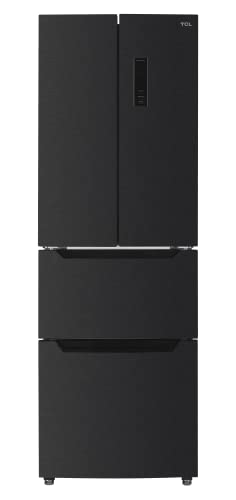The Ultimate Guide to Buying a Fridge: Making Smart Choices for Your Kitchen
When it pertains to essential kitchen devices, couple of products are as important as a refrigerator. It is the heart of the cooking area-- keeping your food fresh and your components at ideal temperatures. However, picking the right fridge can be a complicated task, offered the variety of styles, sizes, and technologies available on the marketplace. This guide will supply important insights into the elements to consider when purchasing a fridge, typical types, and often asked questions to help you make an informed decision.
Key Factors to Consider When Buying a Fridge
To streamline your decision-making procedure, here are the core factors one need to think about when aiming to buy a fridge:
1. Size
- Kitchen Space: Measure the area in your cooking area where the fridge will be placed. This includes checking doorways to ensure the fridge can be delivered without concern.
- Capacity: Consider just how much food you typically keep. A bigger household may require a fridge with a capacity of 20-26 cubic feet, while smaller families might find 10-18 cubic feet adequate.
2. Style
- Leading Freezer Refrigerators: A conventional option that includes a freezer on top. They are usually more economical and energy-efficient.
- Bottom Freezer Refrigerators: Offers benefit by placing the refrigerator area at eye level. Ideal for those who access fresh food more typically.
- Side-by-Side Refrigerators: Provides simple access to both freezer and fresh food sections. Helpful for narrow kitchen areas.
- French Door Refrigerators: Combines the benefits of bottom freezers with side-by-side designs. click here include additional features such as ice and water dispensers.
- Compact Refrigerators: Perfect for little spaces like dormitory spaces or offices.
3. Energy Efficiency
- Look for energy-efficient designs to minimize electrical power costs. Examine the Energy Star label, which indicates that the home appliance satisfies or surpasses energy efficiency standards.
- Think about the typical yearly energy intake reported in kilowatt-hours (kWh).
4. Features
- Ice and Water Dispenser: Convenient for instantaneous access to ice and filtered water.
- Smart Technology: Some fridges come geared up with Wi-Fi connectivity that enables you to keep track of and adjust settings from your smart device.
- Adjustable Shelves and Bins: For customizable storage to accommodate tall products.
- Temperature Control Zones: Different locations might have different climate controls for optimal storage of different foods.
5. Rate
- Set a spending plan. Fridge rates can range from a few hundred to numerous thousand dollars depending on design, size, and functions.
- Consider additional expenses such as extended guarantees, delivery, and setup.
Relative Table of Popular Fridge Styles
| Fridge Style | Average Price Range | Pros | Cons |
|---|---|---|---|
| Leading Freezer | ₤ 400 - ₤ 1,200 | Economical, energy-efficient | Minimal features |
| Bottom Freezer | ₤ 900 - ₤ 2,500 | Easy access to fresh food | Can be costly |
| Side-by-Side | ₤ 600 - ₤ 3,000 | Excellent company, simple access | Freezer space can be restricted |
| French Door | ₤ 1,200 - ₤ 4,000 | Spacious, elegant, frequently feature-rich | Greater price point |
| Compact | ₤ 150 - ₤ 600 | Space-saving, portable | Minimal storage capability |
Regularly Asked Questions (FAQs)
1. How long do fridges usually last?
Typically, a well-maintained refrigerator can last around 10 to 20 years. Regular upkeep, such as cleaning the coils and inspecting door seals, can lengthen its life-span.
2. How can I keep my fridge effectively?
- Keep the coils clean to help keep energy efficiency.
- Guarantee that the door seals are tight to avoid cold air from leaving.
- Frequently thaw (if appropriate) and tidy the interior to avoid build-up of germs and odors.
3. Do I need to pay for shipment and setup?
Most merchants charge for shipment and installation, but this cost can in some cases be waived during promotions. Always confirm the charges before completing your purchase.
4. What should I do if my fridge is not cooling properly?
Start by examining the temperature level settings and guarantee the vents are clear of any obstructions. If the concern persists, it might be required to consult an expert repair service.
5. How can I figure out the size of the fridge I require?
As a general standard, permit for about 4 to 6 cubic feet of space per person in your family. Nevertheless, this can vary based upon specific cooking and storage habits.
Buying a refrigerator may appear basic, but it needs careful factor to consider of numerous aspects. By assessing your requirements and preferences in regards to size, style, features, and energy efficiency, you're much better positioned to choose a fridge that will serve your home well for several years to come. This guide intends to streamline the complexities involved in fridge shopping, empowering you to make an informed decision that will enhance your kitchen experience. Whether you're upgrading or purchasing your first system, a little research can result in a refrigerator that perfectly fits your lifestyle and cooking routines.

